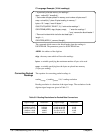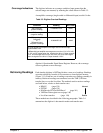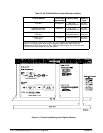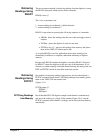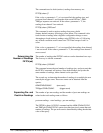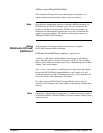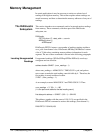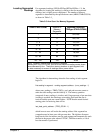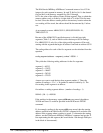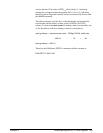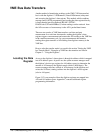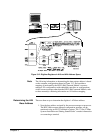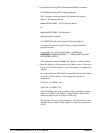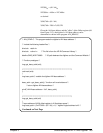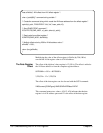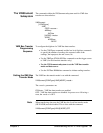
The DIAGnostic:MEMory:ADDResses? command returns a list of 32-bit
integers for each segment in memory. In each 32-bit list, bit 1 is the aborted
flag and bit 0 is the memory wrapped flag. Bit 31 through
bit 2 is the value of the address counter for that segment. Thus, to obtain the
memory address only, a divide by 4 (right shift of 2) of the 32-bit list must
be done. Since the address counter points to the memory location where the
next reading will be stored, the address should be decremented by 1 before
use.
As an example, assume: ARM:COUN 5; SENS:SWE:POIN -20;
TRIG:COUN 35
Because of the ARM:COUN specified memory is divided into eight
segments (Table 3-5), each of which could contain up to 65536 readings.
For ARM:COUN 5, only five of the eight possible segments will be used,
starting with the segment that begins at address 0 and ends at address 65535.
The ending address for each of the five segments can be calculated from the
equation:
ending segment address = segment_number * 65536 - 1
This yields the following ending addresses for the five segments:
segment 1 = 65535
segment 2 = 131071
segment 3 = 196607
segment 4 = 262143
segment 5 = 327679
Assume you want to read the data from segment number 4. Then, the
number of readings = 35 + 1 = 36 (padded to make divisable by 4). The
first reading in the segment is at address:
first address = ending segment address - (number of readings - 1)
262143 - (36 - 1) = 262108
If the readings in the memory segment did not wrap around, the address
262108 and count 35 would be specified in the DIAGnostic:FETCh?
command.
If, for example, readings in the segment did wrap around, then the starting
address specified in the DIAGnostic:FETCh? command will not be the first
address in the segment where a reading is stored. To determine the starting
address, use the DIAGnostic:MEMory:ADDRess? command and get the 32
bits representing the 4th segment (this would be the 13th through 16th bytes
in the block of data returned).
144 Understandin
g
the HP E1429 Di
g
itizer Chapter 3



